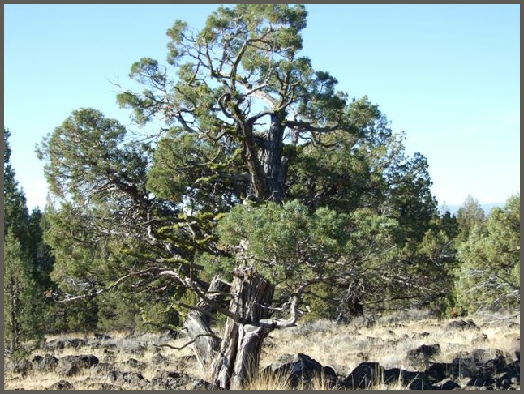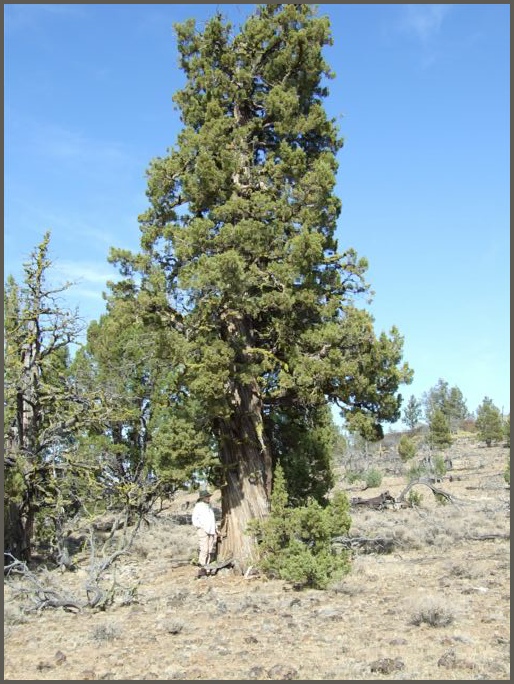Contact Us. Web site contents copyrighted. All rights reserved. Made With Serif WebPlus. Home

Characteristics of Old Growth Western Juniper
Characteristics of old growth juniper from the “Do Not Cut Old Juniper” page of the Forest Service and BLM “Fuelwood Permit Attachment”.
“Do not cut juniper with one or more of these features: (1) Rounded or asymmetrical tops that may be sparse and contain dead limbs. (2) Deeply furrowed, fibrous bark on the trunk that is reddish in color in living trees and gray in dead trees. (3) Large dead or live branches near the base of the tree. (4) Multiple main trunks.”

Characteristics of old growth juniper as described by Dr. Richard Miller in “Biology, Ecology, and Management of Western Juniper”, 2005.
“As (western juniper) trees mature (usually over 150, plus or minus 30 years), their inverted cone shaped canopy becomes increasingly nonsymmetrical in appearance with rounded tops and spreading canopies that may become sparse and contain dead limbs or spike tops. The bark on the trunk becomes deeply furrowed, fibrous (compared to scaly in younger trees), and can turn reddish in color.” “Bark on trees less than 150 years is scaly and furrows are shallow or lacking.” “Bark is typically gray but can turn reddish in some old trees (more than 300 years).” “Lower branches may be very large (more common in open stands), and branches are (may be) covered with bright green fruticose lichens. The cambium layer may also die around portions of the tree trunk, leaving only a narrow strip connected to a single live branch.”

Characteristics of old growth juniper from page 49, section 2.4.4, Sage Steppe Restoration FEIS, April 2008
“Characteristics of old growth juniper would include: (1) Rounded or unsymmetrical tops that may be sparse and contain dead limbs. (2) Deeply furrowed, fibrous bark on the trunk that is reddish in color. (3) Branches near the base of the tree that may be very large and covered with fruticose lichens. (4) Limited terminal leader growth on branches in the upper 25% of the canopy.”
It is important to note that a juniper tree needs to have only one of the characteristics listed above to be classified as an old growth juniper. Some agency personnel in charge of juniper removal projects have told us that they cut down all juniper with “long growth leaders” since “old juniper are not actively growing”. Click here for some pictures of old growth juniper with long terminal leaders in the upper 25% of the canopy that also exhibit other old growth characteristics.

Old Trunk Bark vs Young Trunk Bark
This is one key indicator of age. Click here for comparisons.